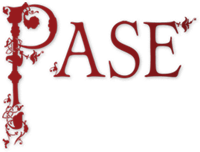Table of Contents
Top of page
Name
Summary
Distribution Map
Property List
Profile
Bibliography
Bottom of page
Herling 2
Herling ‘of Herriard’ (Hants), fl. 1066
Male
DWP
4 of 5
Summary
Herling 2 held two estates in north-east Hampshire and south-west Berkshire TRE assessed for a total of 6 hides and with a value of £8; he had power of alienation over his largest estate and held it under the lordship of King Edward (Edward 15).Distribution map of property and lordships associated with this name in DB
List of property and lordships associated with this name in DB
Holder 1066
| Shire | Phil. ref. | Vill | DB Spelling | Holder 1066 | Lord 1066 | Tenant-in-Chief 1086 | 1086 Subtenant | Fiscal Value | 1066 Value | 1086 Value | Conf. | Show on Map |
|---|---|---|---|---|---|---|---|---|---|---|---|---|
| Berkshire | 58,2 | Irish Hill | Herleng | Herling 'of Herriard' | - | Hugolin the steersman | - | 1.00 | 4.00 | 3.00 | E | Map |
| Hampshire | 23,29 | Herriard | Erlenc | Herling 'of Herriard' | Edward, king | Hugh de Port | Walter fitzRoger | 5.00 | 4.00 | 5.00 | E | Map |
| Totals | ||||||||||||
Profile
Herling 2’s largest estate comprised 5 hides at Herriard, on a ridge of the North Downs in north-east Hampshire. DB states that he held it of the king ‘in alod’ TRE, indicating that Herling had power of alienation over his land but that King Edward (Edward 15) was his lord by commendation.It is possible that Herling 2 was also the TRE holder of a small manor of 1 hide at Irish Hill by the River Kennet in south-west Berkshire and 21 miles from Herriard. This is close enough for the two estates to have been held by the same man given their sizes; furthermore, the DB spellings of Herling in each case reflect the Romanic form ‘eng’ for the final element (von Feiltizen 1937: 51, 248, 290). Although the estates passed to different post-Conquest successors it should be noted that the 1086 holder’s claim to Irish Hill was disputed by the shire on the grounds that it had not belonged to his antecessor.
In east Dorset was a third estate held TRE by someone called Herling, here identified as Herling 3 although it is difficult to determine if the three instances of the name represent one, two or three people. The extreme rarity of the name and a Continental Germanic one at that favours a minimalist interpretation whereas the opposite is suggested by the fact that all three estates passed to different successors. Other factors are the Romanic spelling reflected in the DB forms of Herling 2’s name but not that for Herling 3, and that both of Herling 2’s estates lay about 50 miles away from that of Herling 3 in Dorset (although given the large size of Herling 3’s estate this might not be significant). None of this evidence is conclusive; but the balance of probability is just in favour of regarding Herling 2 and Herling 3 as different men.
Bibliography
von Feilitzen 1937: Olof von Feilitzen, The Pre-Conquest Personal Names of Domesday Book, Nomina Germanica 3 (Uppsala: Almqvist and Wiksells, 1937)
